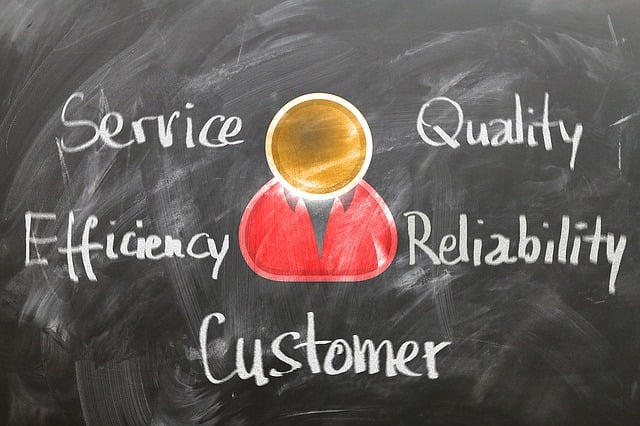A unique dealership CRM system is a lifesaver for automobile sales in this competitive industry that will assist you efficiently manage customer interactions and drive more revenue. But just when you think having a dealership CRM is perfect, along came the need to also be integrated with your website CRM systems operate in isolation from the website and it raises several problems which sabotage both lead alignment as well as quality.
Dealers struggle with disconnected data, the lack of speed-to-lead follow-ups and poor lead nurturing efforts. Usually, themes for catchall and customer identification are built into the CRM in order to create a resultless dataset that is useful not only for creating new leads but also provides reliable information about your customers so you deliver one-on-one communications. Understanding the effect of these integration gaps will enable dealerships to appreciate why a unified system is essential for improving sales performance and customer engagement.
Table of Contents

What is dealership CRM?
Dealership CRM (Customer Relationship Management) system is a custom-made software to facilitate automotive dealers manage their leads and give them the best approach involving client communication. With a powerful Customer Relationship Management (CRM), it consolidates the customer information — from contact details and purchasing history to service records, as well as communication preferences— which then allows dealerships deliver tailored experiences.
Auto leads Pro is a lead management, sales tracking and CRM software that automates routine tasks required for your dealership plus providing you with real-time data to make better decisions. On top of that, a dealership CRM system works with other tools — like inventory management and financial software — to help you maintain this unbroken exchange of information across departments. A dealership CRM is a must for growing & retaining your customer base and boosting sales performance in the automotive sector by making processes efficient and improving buyer satisfaction.
What is lead generation?
Lead generation means to collect the interests of a buyer and “leads” them down in your sales funnel with formed into customers. They employ different methods and techniques to scout for people/organizations who potentially be your clients. The most common ways to do it are: content marketing; social media campaigns; email marketing or paid advertising.
It usually starts with awareness — you get your audience in the door, then provide them something they consider valuable (whether content or offer) and collect their contact information through forms/sign-ups. Good lead generation nurtures leads with information, communication and guides them through the sales funnel to become a customer. The golden stage for business growth and expansion of customer bases.
Why does an automobile dealer need CRM?
•Streamlined Sales Processes
It will save hefty time by managing everything from lead generation to customer communication following for you and arrange all in better way. This way sales teams control their actions, automate processes and focus on activities that yield the highest gains. They close sales faster, which has a domino effect of improving overall dealership sales performance and productivity.
• Improved Customer Experience
It helps in delivering a more personalized customer experience as it centralizes all the data together and also makes important communication less time consuming. The service history, preferences and past interactions are tracked by dealerships which enables them to provide personalized services in future such as proactive support. This style of personalisation creates much happier customers but also drive increased satisfaction, loyalty and repeatable business.
• Better Lead Management
The positives of using CRMs in lead management include capturing leads, organizing them, prioritizing the ones with higher engagement (compared to others) and automating follow-ups. This way, no lead goes unsold and insists the spread of opportunities is not done randomly by dealerships. In turn, the sales pipeline becomes more effective and conversion ratios are lifted leading to greater sales results and an enhanced overall performance.
• Data-Driven Decision Making
The analytics and reporting features of a CRM provide insights into customer behaviour, sales performance, marketing effectiveness. Dealerships use this data to look at different trends, strategies and make operations decisions. A data-driven approach to business allows for a laser-focused targeting, marketing strategies and sales efforts that feed the flywheel of growth and profitability.

Dealership CRM struggling to pipe new leads without website integration
• Disconnected Lead Capture
Disconnected lead capture leads from the website forms/chat do not get added back to CRM as some or other info along with Automatically The integration gap of virtual customers expressing interest online and having information recorded or put into action may not happen. Accordingly, leads receive less attention and those who should follow up on them do not get to it as quickly.
These delays dramatically impact conversion rates and it is the speed of these responses which are important in engaging with potential buyers. Without the automatic data flow that transfers digital leads to the right place at a dealership, its teams have little choice but to handle these slower or less efficiently than they could and should be — which means lost profits in some way (though it cannot always easily measure), mostly because of competitor response time. This means that all leads are captured and acted upon quickly, making for a higher rate of conversion with better sales results.
• Fragmented Data
Fragmented data is when data from a dealer group’s website and its CRM are not integrated, thus the data becomes siloed. This separation creates variances and holes in customer profiles since the CRM system does not contain fresh details from the recent website activities or vice-versa. This kind of fragmentation inhibits effective lead management as it does not enable a complete view of every customer’s behavior, preferences and history.
Lack of cohesion in data systems lock out the sales and marketing teams from offering personalized communication or tailored offers, thus diminishing their power to make and convert leads. Integration bridges this gap because customer data is now centralized, accurate and has enhanced lead management and overall efficacy of sales strategies.
• Ineffective Lead Nurturing
The root cause of ineffective lead nurturing is often that a dealership’s CRM isn’t integrated with their website, preventing the kind of automated and personalized follow-up necessary to keep potential customers engaged. That integration enables the CRM to track website behaviors — page views, time spent on sections of a site and interactions with forms or chat features.
With this information, automated and focused marketing to nurture leads is possible — which means your prospects get a tailored message and offer based on what they like best. Without integration, dealerships are missing this vital information and sending generic or late communication that does not meet the unique needs of each lead. Therefore, any follow-up becomes less and less effective leading to the leads losing interest or seeking more relevant interaction from competing brands.
• Inaccurate Insights
For example, if a dealership does not integrate its CRM with their website it leads to losing the complete picture of what is going on between the lead and your store. Integration makes it possible for the CRM to gather and analyze data on website visits, click patterns or engagement with online content.
These insights reveal the interests and preferences of leads, which dealerships use to hone their marketing strategies as well as sales personnels. Integration is key — without it, dealerships are left in the dark with next to no insight or direction for their campaigns and sales tactics. Without the insight into how leads are tracking and snagging, marketers will missconducts generic outreach that is not relevant to potential customers which impacts lead conversion efforts We lower on an ROI too.
• Increased Manual Work
If a dealership’s CRM and website are not so integrated, then this will lead to more work from your end because you have to enter the details of potential leads manually. This process is not just slow, but it also increases exposure to the possibility of errors since employees have a duplicity of work in order for data transfer between systems that were being used accurately.
Mistakes such as incorrect contact data or forgotten follow-ups crush leads and CRM performance, a common result of manual moves. Moreover, having an extra burden drains the resources further and decrease the overall execution. This means integration keeps all these manual aspects at the bay and frees up your resources from entering data repetitively and reducing chances of human errors thus, helping in the overall operational efficiency by improving lead operations.
• Branding And endorsing Ineffectiveness
When a dealership’s CRM isn’t tied in with their website, this creates limited marketing effectiveness which leads to an inability to open up targeted marketing campaigns. It enables you to collect and analyze data that your leads have submitted over time, such as which pages a lead visits clicked links etc.
It helps dealerships create custom marketing campaigns per lead behavior and interest. Self-served Collateral As a result, marketing is less targeted and relevant in its communication — made worse that the data at their disposal are generated via SAFe transactions. Hence, campaigns would be unable to strike a cord with leads and the response rate or conversion rate would slump. This high-quality and targeted data needs to feed into existing marketing programs so that strategies are more compelling with the far greater rigour from reliable evidence.
So, last but not the least conclusion is integration of dealership CRM with its website play a critical role for generating leads as well hiking overall sales. Dealerships struggle with disconnected lead capture, fragmented data and ineffective lead nurturing when a composing strategy is absent from or not integrated within their marketing approach – all of which reduce conversion rates and render your marketing efforts obsolete.
Without Real-Time Data Sync: More manual toil, less accurate insights and fewer tailor-made customer interactions for lack of real-time data sync. By integrating, you complete these gaps by facilitating smooth data flow and targeting marketing — as well ensuring automatic follow-ups. It always pays to move sales process more effectively, drive better customer engagement and allow decision making based on insights which are possible by doing this. If you´re a dealer looking to increase your lead management and Grow Faster, CRM integration with the website is essential.

How does Himcos help?
Himcos enhances CRM for automotive dealerships by optimizing performance, reducing costs and integrating advanced security features. We also provide seamless website integration streamlining operations and improving customer interactions. Our solutions ensure your CRM is scalable, secure and high-performing, helping your dealership stay competitive and drive business success.


